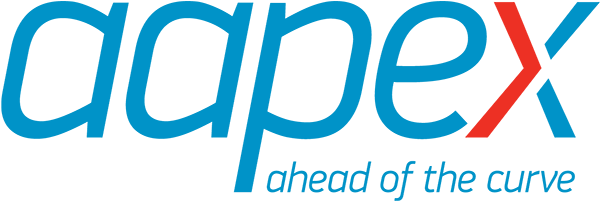The Pandemic’s Impact on EVs and AVs and the New U.S. Fuel Economy Standards
Monday, June 08, 2020
By Brian Daugherty, chief technology officer, Motor & Equipment Manufacturers Association

Wow, it is amazing how much the world has changed since AAPEX 2019 – and most of those changes have occurred in the last few months! As we approach AAPEX 2020, we are obviously in very uncertain times and many of these changes will impact the development timelines of automotive and automotive aftermarket technology.
The Impact of the Pandemic on Vehicle Electrification and Automation Efforts
OEMs and suppliers have invested hundreds of billions of dollars developing full battery electric vehicles (BEVs) over the past several years. However, the question of how rapidly the consumer market will develop for BEVs has been the subject of intense speculation and concern – even before the pandemic. Currently, the market is facing multiple headwinds with low crude oil prices, high global unemployment, reduced consumer spending, a drop in vehicle sales, and the resulting cost cutting measures by vehicle OEMs. These factors point to a difficult market for electric vehicles that cost more – at least in the near term – than their internal combustion engine (ICE) counterparts due to high battery prices. Expect significant changes and delays for BEV platforms in the short term as OEMs focus on program profitability.
Since hybrid electric powertrains are typically designed to be used interchangeably on ICE vehicle platforms, hybrids will continue to be the lower risk method for many OEMs to meet increasingly stringent global fuel economy standards as they modify their production plans. This environment will generally benefit aftermarket companies since hybrids require all the parts and repairs of an ICE vehicle plus the additional hybrid components versus BEVs that don’t require as much. However, engines will continue to be downsized and the resulting reduced cylinder count will slowly impact the aftermarket.
The overall spending on automated vehicles (AVs) is probably at least a full order of magnitude lower than the current design and production investment going into BEVs since AVs are still in the R&D phase. The market will continue to grow for Advanced Driver Assistance Systems (ADAS) – especially automatic emergency braking (AEB) and the related adaptive cruise control (ACC) – along with low-level (SAE L1 and L2) “driver assist” automation.
But many of the same headwinds apply to higher automation level development (i.e. L4 robo-taxis) along with continued technical challenges and additional COVID-19 uncertainties relating to ride sharing and the cleaning of shared vehicles. As a result, OEMs are starting to announce significant delays in their previously announced robo-taxi test fleet rollout dates and automation start-ups are struggling to secure their next round of funding. Expect a wave of consolidation in the AV world as these start-ups are purchased by traditional OEMs and large technology companies. As projected AV development timelines increase dramatically, we will continue to see more OEM partnerships as they seek to share the high development costs and risks.
The U.S. Releases New Fuel Economy Standards for MY2021 – MY2026 Light Vehicles
On March 31, 2020, the U.S. Department of Transportation’s National Highway Traffic and Safety Administration (NHTSA) and the U.S. Environmental Protection Agency (EPA) released the Corporate Average Fuel Economy (CAFE) and Green House Gas (GHG) regulations final rulemaking to cover MY2021 – MY2026 light vehicle fuel economy and CO2 emissions. The rulemaking is formally known as the Safer Affordable Fuel-Efficient (SAFE) Vehicles Rule. The original Notice of Proposed Rulemaking (NPRM) issued by NHTSA and the EPA on August 2, 2018, covered a wide range of possible options including the primary proposal to “flatline” the standards after MY2020. The proposed options were lower than the previous 2012 plan’s 5 percent annual increases over the same time period. The final SAFE rule takes a middle path with a 1.5 percent year over year increase in light vehicle mpg requirements and a corresponding decrease in CO2emissions over the MY2021 – MY2026 timeframe.
Almost all OEMs selling vehicles in the U.S. are falling short of the current fleet fuel economy standards and are making up the shortfall by using credits that have been banked in previous years or by purchasing credits from other OEMs. The steady increase in fuel economy requirements will require the continuous advancement of fuel saving technologies. This will be beneficial for OE automotive suppliers who will continue to drive the industry forward with new research and development and it will also be good for aftermarket suppliers as these increasingly higher value technologies are replaced in the future.
One factor to keep in mind is that the constant upgrading of powertrain technology will result in many more replacement parts to design, develop, and keep in inventory. These technologies will require highly skilled, engineering intensive workforces to develop and there will be no fuel economy “plateau” as we have sometimes had in the past to allow companies to catch up. Aftermarket part manufacturers and service shops that plan well and successfully adapt to this wave of new technology will lead the industry.
To ensure service shops are prepared, AAPEX 2020 will spotlight new and emerging vehicle technologies in specially-designated sections on the show floor and in a new Alternative Fuel section with related training. Technology-focused exhibitors also will showcase and demonstrate innovative products and solutions to keep shops current and ready for the road ahead.
We look forward to seeing you at AAPEX 2020!
